#sphere; convex
Explore tagged Tumblr posts
Text
For three dimensional spheres of the same size, the smallest possible convex hull involves placing the spheres in a line—until you get to 56 spheres, at which point there is a smaller convex hull you can get by packing them closer together. Apparently for 4-spheres, this pattern holds at least up to 300,000 spheres, and for 42-spheres, it holds indefinitely.
Geometry is so maddening sometimes…
340 notes
·
View notes
Text
HORROR WEEK- FOTD #144 : apple bolete! (exsudoporus frostii)
the apple bolete (also frost's bolete) is a mycorrhizal fungus in the family boletaceae >:-) it typically grows near the hardwood trees of the eastern US, southern mexico & costa rica. it was chosen for horror week due to its appearance being reminiscent of muscle tissue !!
the big question : will it kill me?? nope !! however, although they are edible, they are not recommended for consumption as it is quite easy to confuse them with other red boletes. ^^
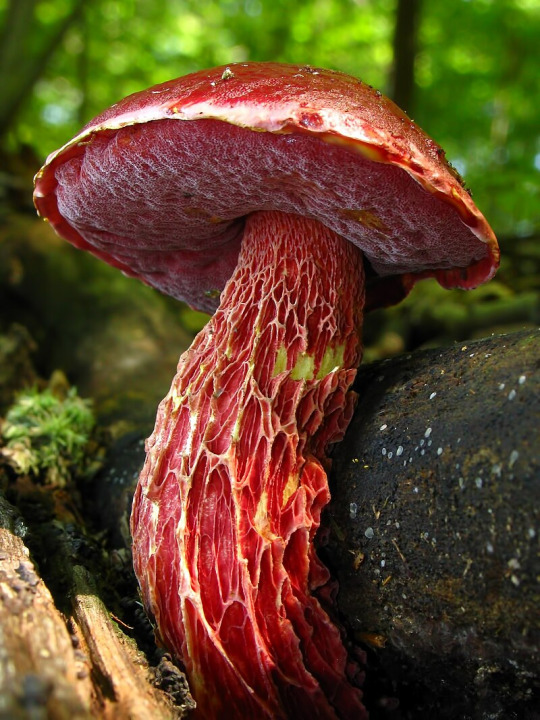
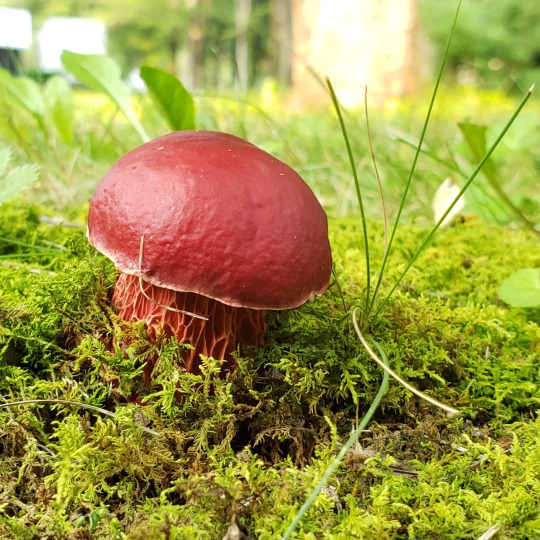
e. frostii description :
"the shape of the cap of the young fruit body ranges from a half sphere to convex, later becoming broadly convex to flat or shallowly depressed, with a diameter of 5–15 cm (2.0–5.9 in). the edge of the cap is curved inward, although as it ages it can uncurl and turn upward. in moist conditions, the cap surface is sticky as a result of its cuticle, which is made of gelatinized hyphae. if the fruit body has dried out after a rain, the cap is especially shiny, sometimes appearing finely areolate (having a pattern of block-like areas similar to cracked, dried mud). young mushrooms have a whitish bloom on the cap surface.
the colour is bright red initially, but fades with age. the flesh is up to 2.5 cm (1.0 in) thick, & ranges in colour from pallid to pale yellow to lemon yellow. the flesh has a variable staining reaction in response to bruising, so some specimens may turn deep blue almost immediately, while others turn blue weakly & slowly.
the tubes comprising the pore surface (the hymenium) are 9–15 mm deep, yellow to olivaceous yellow (mustard yellow), turning dingy blue when bruised. the pores are small (2 to 3 per mm), circular, & until old age a deep red colour that eventually becomes paler. the pore surface is often beaded with yellowish droplets when young (a distinguishing characteristic), & readily stains blue when bruised. the stipe is 4 to 12 cm (1.6 to 4.7 in) long, & 1 to 2.5 cm (0.4 to 1.0 in) thick at its apex. it is roughly equal in thickness throughout its length, though it may taper somewhat toward the top ; some specimens may appear ventricose (swollen in the middle). the stipe surface is mostly red, or yellowish near the base ; it is reticulate — characterized by ridges arranged in the form of a net-like pattern."
[images : source & source] [fungus description : source]
#• fungus of the day !! •#• horror week >:-) •#[exsudoporus frostii]#: frost's bolete :#: apple bolete :#144#||#image undescribed#fungi#undescribed#mushroom#mushrooms#earth#nature#cottagecore#fungus#foraging#forestcore#mycology#fotd#fungus of the day#exsudoporus frostii#frost's bolete#apple bolete#bolete
242 notes
·
View notes
Text
Regular-ish Convex Polyhedra Bracket — Round 5 (Finals)
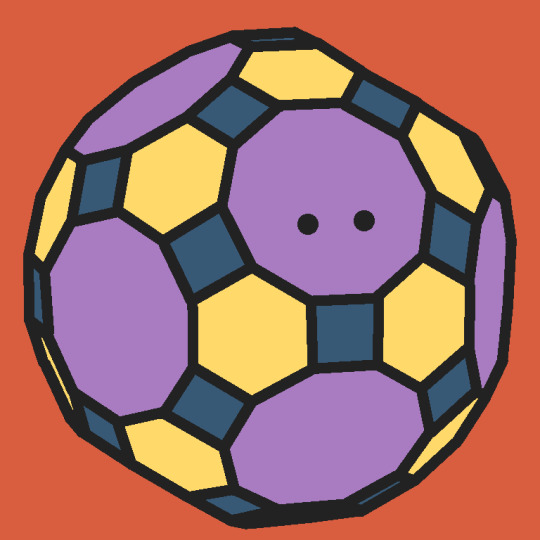
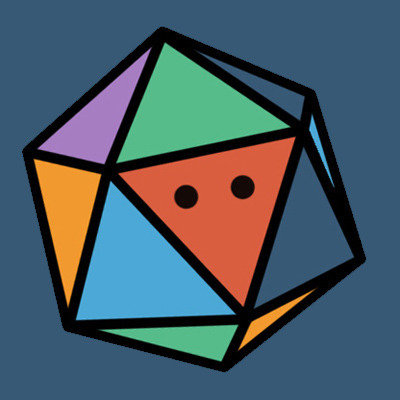
Propaganda
Truncated Icosidodecahedron:
Also called the Rhombitruncated Icosidodecahedron, Great Rhombicosidodecahedron, Omnitruncated Dodecahedron, Omnituncated Icosahedron
Archimedean Solid
Semiregular
Dual of the Disdyakis Triacontahedron
It has 12 regular decagonal faces, 20 regular hexagonal faces, 30 square faces, 180 edges, and 120 vertices.
It has the most edges and vertices of all platonic and archimedean solids.
Of the vertex-transitive polyhedra, it fills up the most of the volume of the sphere it fits in (89.80%).
It is not actually the shape you get when you truncate an icosidodecahedron, although it is topologically equivalent.
It is the mod's favorite three-dimensional shape.
They made a void truncated icosidodecahedron and it's glorious. I had one for a while, it's hard to turn because of alignment issues, especially the decagonal sides. Fun puzzle tho, never did figure out how to permute the last layer...
Image Credit: @anonymous-leemur
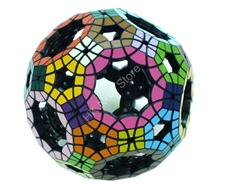
Regular Icosahedron:
Platonic Solid
Regular
Dual of the Regular Dodecahedron
It has 20 regular triangular faces, 30 edges, and 12 vertices.
Image Credit: @etirabys
#Round 5#Truncated Icosidodecahedron#Great Rhombicosidodecahedron#Regular Icosahedron#Icosahedron#Polyhedra#Archimedean Solids#Platonic Solids
120 notes
·
View notes
Note
Hi, these shapes are so cool! I love math, but I’m realizing I never learned much about 3D solids besides the very basic shapes (cones, spheres, uhh those saddle hyperbola things, etc)
Would you be able to explain some of the terms or show me where I can learn more? I think I’ve checked Wikipedia for some but it was not beginner friendly lol. I know I could look it up myself (and I probably will once I finish writing lol), but sometimes I think it’s more fun or helpful to ask someone instead!
I’m mostly curious how they’re named, like why some have “great” in the name or how i.e. a 12-pointed star is differentiated from a 12-faced regular solid with missing corners or whatever those Rubik’s cube lookin things are. But also like literally any other terminology, like the random scientist last names that pop up in the lists of features lmao
Idk why I wrote this like a professional email it’s just a tumblr ask but oh well lmao
Thank you for the ask! I've been intending to make some sort of reference post for the terms (polyhedra-related and not) used on this blog and, while it could still be a little while until that is made, you've reminded me to add that to my to-do list.
I will make the disclaimer that I am certainly more of a shape enthusiast than an expert, so if someone more knowledgeable comes across this and notices something I've said or linked is incorrect/inaccurate (keeping in mind that I have simplified some of the definitions), please feel free to correct me! This goes for all of my other posts as well.
I won't cover every term here, but some of the most common ones I use in the daily polyhedron posts are:
convex polyhedron - a polyhedron for which the line connecting any two points on its surface is always "inside" the polyhedron. For non-convex polyhedra, this is not true.
uniform polyhedron - a polyhedron with faces that are all regular (i.e., having all sides of equal length and all interior angles of equal measure) and vertices that are identical.
star polyhedron - a non-convex polyhedron with a star-like visual appearance, usually created through stellation (extending the edges or faces of a convex polyhedron) or augmentation (adding - usually a pyramid or cupola - to a convex polyhedron).
Schläfli symbol - for regular polyhedra, a notation of the form {p,q}, signifying q regular polygons with p sides meeting at each vertex. This can be modified to represent non-regular polyhedra, for instance, t{p,q} would be a truncation of the regular polyhedron {p,q}. Star polyhedra may have fractional values for p.
vertex figure - the polygon exposed when a vertex of a polyhedron is cut off.
dual polyhedron - the polyhedron whose vertices correspond with the faces of another and vice versa. A self-dual polyhedron has a dual that is identical to it.
With regards to "great," it is a prefix used to 1) refer to a specific kind of stellation (extending faces) or 2) distinguish between similar polyhedra or conjugates (for example, the great cubicuboctahedron is named as such because it is "spikier" than the small cubicuboctahedron).
The last name of the discoverer of a polyhedron - usually a mathematician - often appears in the name of that polyhedron if it cannot be named using typical polyhedra nomenclature (e.g., the Szilassi polyhedron). This is far from a general rule, though, and it varies depending on the polyhedron.
Here are a few links that may help further with the information above/cover terms I haven't mentioned (as I definitely have not covered everything):
Hope this helps! If not, that terminology post should be coming at some point, and feel free to send more asks for clarification.
9 notes
·
View notes
Text
forgot normal people are weird about meowing in aerodynamics lab today lol
anyway isn't it kinda funky how the drag coefficient of a convex half-sphere goes down with speed while the Cd of a concave half sphere increases
2 notes
·
View notes
Text
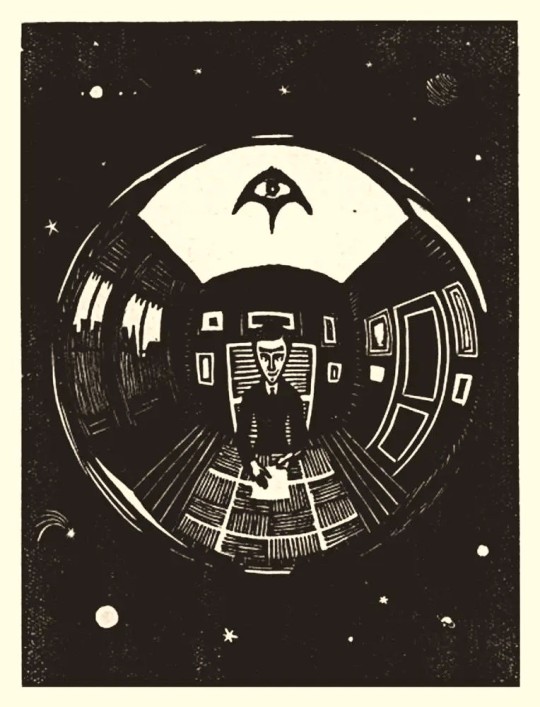
M. C. Escher - The Sphere (Self-portrait in a convex mirror) (c.1920)
23 notes
·
View notes
Text
The Cloud by Percy Bysshe Shelley
...............................................................
I bring fresh showers for the thirsting flowers,
From the seas and the streams;
I bear light shade for the leaves when laid
In their noonday dreams.
From my wings are shaken the dews that waken
The sweet buds every one,
When rocked to rest on their mother's breast,
As she dances about the sun.
I wield the flail of the lashing hail,
And whiten the green plains under,
And then again I dissolve it in rain,
And laugh as I pass in thunder.
I sift the snow on the mountains below,
And their great pines groan aghast;
And all the night 'tis my pillow white,
While I sleep in the arms of the blast.
Sublime on the towers of my skiey bowers,
Lightning my pilot sits;
In a cavern under is fettered the thunder,
It struggles and howls at fits;
Over earth and ocean, with gentle motion,
This pilot is guiding me,
Lured by the love of the genii that move
In the depths of the purple sea;
Over the rills, and the crags, and the hills,
Over the lakes and the plains,
Wherever he dream, under mountain or stream,
The Spirit he loves remains;
And I all the while bask in Heaven's blue smile,
Whilst he is dissolving in rains.
The sanguine Sunrise, with his meteor eyes,
And his burning plumes outspread,
Leaps on the back of my sailing rack,
When the morning star shines dead;
As on the jag of a mountain crag,
Which an earthquake rocks and swings,
An eagle alit one moment may sit
In the light of its golden wings.
And when Sunset may breathe, from the lit sea beneath,
Its ardours of rest and of love,
And the crimson pall of eve may fall
From the depth of Heaven above,
With wings folded I rest, on mine aëry nest,
As still as a brooding dove.
That orbèd maiden with white fire laden,
Whom mortals call the Moon,
Glides glimmering o'er my fleece-like floor,
By the midnight breezes strewn;
And wherever the beat of her unseen feet,
Which only the angels hear,
May have broken the woof of my tent's thin roof,
The stars peep behind her and peer;
And I laugh to see them whirl and flee,
Like a swarm of golden bees,
When I widen the rent in my wind-built tent,
Till calm the rivers, lakes, and seas,
Like strips of the sky fallen through me on high,
Are each paved with the moon and these.
I bind the Sun's throne with a burning zone,
And the Moon's with a girdle of pearl;
The volcanoes are dim, and the stars reel and swim,
When the whirlwinds my banner unfurl.
From cape to cape, with a bridge-like shape,
Over a torrent sea,
Sunbeam-proof, I hang like a roof,
The mountains its columns be.
The triumphal arch through which I march
With hurricane, fire, and snow,
When the Powers of the air are chained to my chair,
Is the million-coloured bow;
The sphere-fire above its soft colours wove,
While the moist Earth was laughing below.
I am the daughter of Earth and Water,
And the nursling of the Sky;
I pass through the pores of the ocean and shores;
I change, but I cannot die.
For after the rain when with never a stain
The pavilion of Heaven is bare,
And the winds and sunbeams with their convex gleams
Build up the blue dome of air,
I silently laugh at my own cenotaph,
And out of the caverns of rain,
Like a child from the womb, like a ghost from the tomb,
I arise and unbuild it again.
#the cloud#percy Bysshe shelley#poetry#poem#daily poem#literature#books#chaotic academia#academia#dark academia#marauders#aesthetic#light academia#cat#détraquée#Détraquée#dramione#hermione granger#Draco malfoy
5 notes
·
View notes
Text
pinned post: will be prone to edits!
hi, you can call me melon—they/he/it (all fine)
i write fic for fun sometimes, mostly in the hermitcraft/life series sphere. obligatory i ship the characters not the people yada yada whatnot and so on. here's my ao3:
more-in depth descriptions of my currently published fics under the break:
Chasing the Horizon Line
co-authored with @nine-of-diamonds! a hc seablings fic with a dash of scarian. gem moves to aurecove, a seaside town, to be the new lighthouse keeper. turns out she may have bitten off more than she can chew with this place—between spreading rumours and missing persons, gem and grian become unlikely friends. merfolk and land dwellers are not meant to interact, evidently. hurt/comfort with themes of feeling lost and wanting to find where you belong. gem & grian -centric povs (swaps multiple times each chapter)
Crosscurrents
co-authored with @nine-of-diamonds! oneshot side story and mostly prequel to chasing the horizon line that explores 4 times that aurecove citizens met mers, and 1 time that a mer met a land person. has main characters you don’t normally see—like joe and stress—and duos you scarcely see, too. humour, through and through, and we thoroughly bullied bdubs throughout the entire run of it. five different povs in total.
There Must Be A Catch
co-authored with @nine-of-diamonds! oneshot attached to the cthl series following skizz’s pov. throughly crack. i cannot describe it in words.
Walking the Line
co-authored with @nine-of-diamonds! the second mainline instalment of the cthl series. solidaritek with a notable dash of flower husbands. three years after moving to lunere, jimmy and tango are doing dandy, until jimmy’s past comes back to bite him. when jimmy goes dark, tango is left scrambling to figure out what’s happening. it only gets more complicated from there. angst & humour with some timeline jumps. jimmy & tango -centric povs (swaps multiple times each chapter)
Set On True North
co-authored with @nine-of-diamonds and @crabbri! oneshot side story directly following the events of walking the line. gem and grian find a way to sort out their mer memory problems. humour with some beautiful prose in there. gem-centric pov.
All on the Line
co-authored with @nine-of-diamonds and @crabbri! the third mainline instalment of the cthl series. scarian with imp&skizz, plus dashes of background flower ranchers + mogpulse. we return to scar and grian in aurecove, freshly married, when a freak accident causes some mers to begin losing both their land and sea memories. now, scar, impulse, tango, and gem are off to fix this before they lose the people they love forever. surprise cameo from mogswamp and themes of listening to your heart. scar & impulse -centric povs (swaps multiple times each chapter, usually)
A Week in the Life of “Detective” Scar
co-authored with @nine-of-diamonds! a scarian oneshot wherein grian is pearl’s assigned watcher, and scar is very interested in knowing what’s going on with these new faces! however, the fact that scar can see grian at all is incredibly weird, and now scar’s losing sleep trying to figure out why only he can see this cute guy. lots of convex in this one, too. deeply unserious but very fun. scar-centric pov with some sprinklings of jellie’s pov.
But There Was Nothing
oneshot following the aftermath of secret life. lizzie relives memories of other lives, but telling what is real and what stories she's just telling herself to stay sane is a challenge. all she has left is the void. mostly canon compliant lizzie-centric pov.
Frost Focus
rancher duo. can be read platonically or romantically. watcher!tango + canary!jimmy decked out 2 au oneshot wherein jimmy and tango are trapped within the walls of the deepfrost citadel, cursed to eternally watch as players scour the depths in an attempt to win and free their friends. at last, pearl's diligence might serve to open the door for them. tango-centric pov.
Reverie, Revelry
solidaritek. assassin au. tango’s employer would benefit greatly from the sole heir to the solidarity family fortune being removed from the equation, so this assassination is high profile, to say the least. the only issue for tango is that, well, he fell in love with him. now to figure out how to deal with that, on a time limit. fluff with a decent lot of implied sexual content. tango-centric pov. shorter fic compared to my others.
Here’s To The World Where You Do
scarian. a fantasy au wherein scar, grian, scott, and jimmy are caught as members of a resistance against the current monarch, ren. however, with assistance from some undercover rebels (or by other means), they manage to escape. action! betrayal! false identities! there is a lot of violence in this one. angst with a happy ending and lots of lighthearted moments between the horrors. scar & grian -centric povs (swaps each chapter)
i'll maybe write more eventually
6 notes
·
View notes
Text
Black Hole and Cosmic Lensing
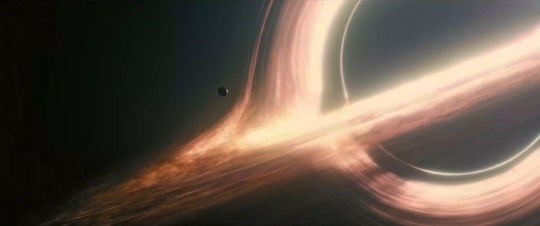
Once in my early youth, I watched a sci-fi movie about space travel that supposedly featured a black hole. It resembled a galaxy, which I found quite amusing—how can you see a black hole if no light can escape from it? Much later, I realized that although the depiction in the movie wasn't accurate, and yes, we certainly can't see the black hole itself, there are still many fascinating phenomena around it that can be observed. So, what exactly can we observe?
First, imagine Saturn with its majestic rings. Then, imagine this Saturn turning black, becoming invisible—and you'll get the picture. There are luminous rings rotating around something that, in reality, we cannot see. But it's definitely there. These rings, or more accurately, the matter drawn in by the black hole, spin at tremendous speeds and are located in the equatorial plane—just as in any galaxy formed around any massive celestial body. Unlike the tranquil, icy rings leisurely circling our native gas giant Saturn, this matter is accelerated to nearly the speed of light. It may be dense and heated near this celestial body and becomes more sparse and slower farther away. Another way to visualize it is like a whirlpool, only much faster.
But in the picture (below), it doesn't quite resemble rings. It looks more like a strange, faceless smiley wearing a hat, reminiscent of what some viewers might have seen in the movie 'Interstellar.' The reason is that space is distorted so much, so what lies behind this celestial body appears partially above and partially below it. The image seems almost turned inside out. Thus, the depiction is akin to Saturn's rings, if they were reflected in a curved mirror, or more accurately, viewed through a powerful lens.
I highly recommend clicking on the link on the video (below) to see it in action - it's absolutely spectacular!
youtube
Also, if you haven't seen the movie 'Interstellar,' I strongly suggest watching it. A group of scientists, including Kip Thorne, participated in its production. Thorne even wrote a book titled 'The Science of Interstellar' with scientific explanations. He explains how the film crew aimed to create images and visualizations as close as possible to what is actually known in science, or at least to use real scientific hypotheses. For the visualization of the black hole, they employed real scientific models, and the visuals were based on the latest scientific understanding. This approach was validated by the recent actual photograph of a black hole.

In this visualization (below), it’s easy to observe dynamically why the rings around a black hole take on such a peculiar shape. The image displays a computer model showing how a black hole would appear if it passed in front of a distant galaxy. Note that the galaxy itself remains unaffected; it is far away, and nothing is happening to it. It's just the image of the galaxy that changes - it resembles what you would see if you took a thick, convex lens and moved it across the backdrop of that same galaxy or a simple geometric pattern. If you have such a lens or a glass sphere, try this experiment. It’s a straightforward way to help understand this phenomenon

So, the biggest difficulty in understanding is that the picture appears static to us. As soon as you see it in motion, there's a moment of recognition of the phenomenon, and then it's no longer a problem to understand why you see rings both around the shadow of the black hole and above and below it.
Furthermore, the ability to view images dynamically also facilitates the discovery of new black holes. When astronomers notice that an entire sector of a previously familiar scene begins behaving strangely — with stars moving erratically or stretching into curved lines, and the image becoming blurred — it strongly indicates the presence of an invisible object traveling between us and this background scene, distorting the image. But we'll discuss this in more detail next time. Stay tuned!
#space#universe#physics#black holes#cosmos#science#astronomy#gravitational lensing#visualization#interstellar#Youtube
6 notes
·
View notes
Note
what's the siney graph in your header?
I encourage anyone reading this to read as much or as little as they want. I hope that anyone can understand the detailed explanation, and that most math undergrads can understand most of the observations I make. The generalisations might not be so accessible all the time.
To put it tersely, its the projection of the barycentric subdivision of a tetrahedron onto the 2-sphere, visualised on a rectangle via the mercator projection.
This is closely related to Coxeter groups, the classification of polytopes, the classification of straight line Coxeter groups, the classification of regular tilings of surfaces of constant curvature, and Schl\"afli symbols.
A more detailed explanation:
Imagine taking a tetrahedron, putting a dot on the middle of each vertex, edge, and face, and connecting them all up with straight lines along its surface. This is the so called "barycentric subdivision". Then consider the origin to be in the middle of the tetrahedron, and then project the tetrahedron (and the lines we drew on it) onto a sphere. We use the mercator projection to view it like a map, but we still think of it as lying on the sphere (see below mp4 of said sphere with the barycentric subdivision drawn on it). Each face of the tetrahedron could be imagined to be coloured a certain colour, so v_2 in the diagram on my header is the vertex at the centre of the yellow face, v_1 is the vertex in the centre of one of the yellow faces edges, and similarly for v_0. These appear to be connected by curved lines, but these are straight lines on the surface of the sphere.
Assume the tetrahedron and sphere are embedded in R^3 and share a common centre at the origin.
Some interesting observations:
each of these lines we drew now gets turned into a great circle, which corresponds to a plane going through the origin
reflections in these great circles preserves the lines we drew, and correspond to automorphisms of the tetrahedron
each triangle in the subdivision has angles pi/3 radians, pi/3 radians, and pi/2 radians.
the symmetry group of the tetrahedron is S_4, where the adjacent transpositions correspond to permutations of the faces (or if you like, vertices)
the symmetric group S_4 has a presentation , where the s_i are adjacent transpositions of 4-tuples
The exponents of the (s_is_j) terms above exactly match the denominators of the angles of the triangle mentioned above
we can pick one triangle on the sphere and consider the reflections in (the faces corresponding to) its edges, denoted s_0, s_1, and s_2. These reflections permute the coloured faces of the tetrahedron, or if you like, its vertices.
we can repeatedly apply these reflections to flip across an edge or vertex of the yellow face, rotate about the centre of the yellow face (e.g. s_0 s_1), and transpose the yellow face with any other face
In this manner we can represent every symmetry of the barycentric subdivision, and by extension, the tetrahedron, in terms of these three reflections. If you don't see this, consider the effect of conjugation.
The sphere is a surface of constant curvature
This tiling generated by the tetrahedron is a regular tiling of the sphere
In short, the tetrahedron has a symmetry group S_4 (often called A_4 in analogy with the Dynkin Diagram) that has a presentation in terms of three reflections, which act transitively on this barycentric subdivision. The angles of the barycentric subdivision correspond to the relations of the presentation. One can generalise this observation and use it to classify polyhedra.
Some theoretical results.
A Coxeter group is a group W accompanied by a set of generators S = {s_1, s_2, ..., s_n} \subseteq W, such that W = <s_i | (s_is_j)^m(i,j) = 1>, where m(i,j) is an integer at least 1, m(i,i) = 1, and m(i,j) > 1 if i != j. These relations turn out to exactly correspond to the relations necessary to define a finite system of reflections in (n+1)-dimensional space.
By polytope, I mean a bounded convex polytope.
The regular tilings of the sphere correspond to regular polytopes, which correspond to the finite irreducible Coxeter groups whose Dynkin diagrams have straight lines
We can define a polytope to be regular if the automorphism group of the polytope acts transitively on the regions of the barycentric subdivision (or equivalently, its "flags"), which corresponds to chains of i-faces of the polytope ordered by inclusion
To go from a polytope to its Coxeter group, you take its automorphism group to get the group structure, and do a similar thing to above to find the generators, you arrange some hyperplanes so that their reflections satisfy the relations of the Coxeter group, generate a system of hyperplanes closed under reflection, and intersect this with an (n-1)-sphere to get the barycentric subdivision, from which you can recover a polytope and its dual polytope, which have isomorphic Coxeter groups
The regular tilings of the plane correspond to the affine irreducible Coxeter groups with straight line Dynkin diagrams.
One can study the regular tilings of hyperbolic space and classify those Coxeter groups too.
The E_8 lattice, which gives solution to 8-dimensional sphere packing has a a load of other interesting properties, corresponds to the Coxeter group E_8, via a certain semiregular polytope which is the convex hull of some lattice points.
The classification of regular (n-dimensional) polytopes and regular tilings of R^n is via the classification of Coxeter groups (and by extension Dynkin diagrams with certain properties)
There is an elegant classification according to Bourbaki that resembles the typical intuitive classification of regular polyhedra and regular tilings of R^2
Fun extensions
There are a lot of ways to represent a symmetry of a polytope/element of a Coxeter group in terms of the reflections/generators s_i. Is there an easy way to determine whether your representation of the symmetry/group element is the shortest? Yes! In fact, you can construct a DFA on the generators in the finite case.
The Cayley graph of a Coxeter group is Hamiltonian
My pfp shows the duality between an octahedron and a cube. If you draw a vertex at the centre of each face of the cube, and take the convex hull of the vertices, you get an octahedron. Note that vertices of the octahedron correspond to faces of the cube, edges of the octahedron correspond to edges of the cube, and faces of the octahedron correspond to vertices of the cube. Two vertices of the octahedron are incident with each other when the corresponding faces of the cube share an edge, and so on. To put it formally, the poset of i-faces of the octahedron and the poset of i-faces of the cube, both under inclusion, have an anti-isomorphism between them. This causes them to have isomorphic symmetry groups.
The cube has its Coxeter group with relations (s_0s_1)^4 = (s_1s_2)^3 = (s_0s_2)^2 = s_i^2 = 1. Note that here the 4 and 3 are different numbers, and the cube has a dual of an octahedron. In the case of the tetrahedron, the exponents are the same, and the tetrahedron is self dual. In general, finite irreducible Coxeter groups with straight line Dynkin diagrams correspond to self dual polytopes exactly when their Dynkin diagrams are "reversible".
This is heavily related to how the cube and octahedron have reversed Schl\"afli symbols.
2 notes
·
View notes
Text
Regular-ish Convex Polyhedra Bracket — Round 3
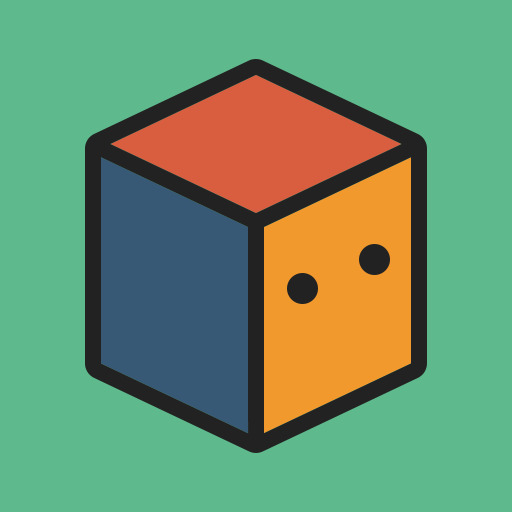


Propaganda
Cube:
Also called the Regular Hexahedron
Platonic Solid
Regular
Dual of the Regular Octahedron
It has 6 square faces, 12 edges, and 8 vertices.
Oh, cmon! The cube is great! It tiles space, its one of the platonic solids that has analouges in all dimensionalities, its vertices are can be mapped to the strings of three binary digits in a structurepreserving way, and its literally the most iconic shape of all time!
Image Credit: Tumblr
Rhombicuboctahedron:
Also called the Small Rhombicuboctahedron
Archimedean Solid
Semiregular
Dual of the Deltoidal Icositetrahedron
It has 18 square faces, 8 regular triangular faces, 48 edges, and 24 vertices.
Image Credit: @anonymous-leemur
Truncated Icosidodecahedron:
Also called the Rhombitruncated Icosidodecahedron, Great Rhombicosidodecahedron, Omnitruncated Dodecahedron, Omnituncated Icosahedron
Archimedean Solid
Semiregular
Dual of the Disdyakis Triacontahedron
It has 12 regular decagonal faces, 20 regular hexagonal faces, 30 square faces, 180 edges, and 120 vertices.
It has the most edges and vertices of all platonic and archimedean solids.
Of the vertex-transitive polyhedra, it fills up the most of the volume of the sphere it fits in (89.80%).
It is not actually the shape you get when you truncate an icosidodecahedron, although it is topologically equivalent.
It is the mod's favorite three-dimensional shape.
Image Credit: @anonymous-leemur
#Round 3#Cube#Rhombicuboctahedron#Truncated Icosidodecahedron#Great Rhombicosidodecahedron#Platonic Solids#Archimedean Solids
50 notes
·
View notes
Text
Sliding along complex collision mesh in Unreal Engine
There is one very annoying thing in Unreal Engine, I found workaround today. None of GPT-s helped me.
There are different types of collision: Box, Sphere, Capsule, Convex and Trimesh (Triangle-based mesh, for Static objects). When you are sliding along trimesh - there can be weird collisions with triangle edges of this mesh. Extremely annoying thing.
The physics body collides them like a barrier. And the car (in my case) hits it like a wall just in a middle of the road, and flies in a sky. Is there an option to completely disable edge collision? Yes, there is such option, I found it in CollisionOneShotManifolds.cpp.
To make Chaos_Collision_Manifold_TriangleContactNormalThreshold very small and Chaos_Collision_Manifold_EdgeContactNormalThreshold very big.
In DefaultEngine.ini:
...
[SystemSettings] p.Chaos.Collision.Manifold.TriangleNormalThreshold=0 p.Chaos.Collision.Manifold.EdgeNormalThreshold=999.0
...
You are welcome :)
0 notes
Note
'' It's a day for stupid questions for you, Aizen-san. It's not like you're very busy in that chair. Did it tickle? I mean the Hōgyoku; one does not get to have a sphere floating in the mid' of your chest daily. ''
( * / @qatakami / unprompted )


❛ Goodness gracious, for I have not forseen anyone from Squad Zero gracing me with their presence. ❜
Deep baritone with evident sardonism laced. Lieu of customary apathy displayed, there was an alteration sufficient enough to amuse himself in this entire particularity of a circumstance that he was bestowed with. Gone temporarily the quietude subsisting within the premises of Muken, now superseded with the briskness emitting from the other soul, of meritorious prowess.
Thence, an artful yet subtle convexity was introduced upon otherworldly facade; artful, still leaving a miscellany of queries unanswered, mysteriousness lingering. Statuary posture, sealed with a variety of binding habiliments upon a construction of a chair, prohibiting him from performing the most miniscule movement.
Or so, that was a contemplation he was entertaining. Laughable. Credulous.
In actuality, his own strength would grow immensively, day by day, hour by hour, minute by minute. The resplendent jewel embedded inside his thorax was a grandeur source of forementioned growth, in a union with the bestowal of immortality. A blessing and a curse, at the same time. An outlandish object taking the role of an extended appendix, in similitude of a beating heart, yet its form its considerably preternatural. To the transcendental wholeness, however, it felt natural.

❛ Any pain is inconsequential, as the reason behind it makes it up for any inconvenience caused. ❜
A brief pause of distinctively deep voice, as a screenplay of reminiscences toured his mind, in regardance of the time the unearthly sphere was subjugated with yours truly. Any pain was insignificant, utterly disregarded; this was another step approaching ascensionism, attaining divinity. But for now, one unbinded nuance of umber would glance at the sight of the Squad Zero member, with apparent iota of intrigue laced. Soon for such notion to be divulged in the form of an inquiry.
❛ Several suppositions have crossed my mind regarding your curiosity, yet none of them have been answered to the fullest extent. Shall I assume your inquisitiveness is connected with the Ōken? ❜

#❛ ● █ MAIN VERSE: IS THIS TRULY WHAT YOU ARE SEEING? OR IS IT WHAT YOU ARE WISHING TO SEE? ❜#❛ ● █ RESPONSES: IN CHARACTER. ❜#qatakami#hey so i would kill for some interactions between our muses friend#thank you so much for sending this !!
1 note
·
View note
Text



I HAVE FOUND THE BEST VIDEO EVIDENCE TO VALIDATE MY CLAIMS ABOUT ARCHED RAINBOW ON A CONVEX EARTH!
IF EARTH IS SPHERE, RAINBOW WOULD CURVE LIKE A U AS IN THE VIDEO! FOR RAINBOW TO CURVE THE WAY WE SEE ON EARTH, THERE IS THE NEED FOR A CONCAVE SURFACE TO REFRACT THE LIGHT TO ARCH IN AN OPPOSITE DIRECTION!
THIS I KNEW LONG AGO BECAUSE THE SPOON WE USE CAN PRODUCE THE SAME RESULTS! THE CONCAVE SIDE PRODUCE AND OPPOSITE IMAGE TO THAT OF THE CONVEX SIDE!
GAME OVER PSEUDOSCIENCE!
0 notes
Note
you've activated the mushroom beam,,,
okay so. so. a LOT of people know mushrooms and think of the round red ones with the white dots. right? but what if I told you there's *more*
there are a few that a lot of people know, like chanterelles, morels, cordyceps (though probably not by name), button mushrooms are in grocery stores, and shitaki I see relatively frequently too. some people may also know some types of inkcaps, because of their very distinctive quality of starting off white but then slowly "melting" until their caps become dark and dripping!
a lot of the mushrooms I focus on are shelf mushrooms (the ones that grow on the sides of trees and stuff, they create a little shelf. they're more formally recognized as polypores, like how some mushrooms have convex caps. examples of different polypores include turkeytail mushrooms, which are one of my favourites because of their colouration! chicken of the woods is another) (also I PROMISE not all polypores are named after birds lol)
there's also some mushrooms with REALLY WEIRD caps! like bloody tooth mushrooms, which have white caps with these big bulbous red lumps. the latticed stinkhorn (clathrus ruber) is also a really strange one, because its cap is less a cap and more like a geometric net!!
also, not all mushrooms HAVE fruiting bodies. cordyceps is actually a case kind of like that, where it's a buuuunch of these little worm lookin ones. my special interest is more specifically around fruiting fungus, but I do love a good slime mould!
okay to conclude. because this is probably already long enough. mushrooms are super interesting, and can fill a lot of roles! like there's some that are parasitic or otherwise advantageous of the lifeforms they grow on (read: cordyceps <3 <3 which targets bugs like ants and flies, but also some others, like destroying angels that target trees (which can smell very sweet OR like rotting meat when fully matured!!)) and some mushrooms are literally just there. like they're just Around existing and it's so wonderful. and some are good for human consumption, like puffball mushrooms which have started entering the more general awareness as foraging videos start to go viral! (unless that's. just in my spheres, which may be the case)
and a very special shoutout to mushrooms that mimic other mushrooms! it happens A TON which is why you need to be careful when foraging. one of the more obtuse examples are false morels, which mimic actual morels haha!
oh that's so cool i love that!
#understand i'm a biochem major so i'm so so fascinated by the internal chemistry of fungi but i don't know where to start in terms of gettin#more info on that topic#thank you for the mushroom rant this was so informative
1 note
·
View note
Text
Optical Spherical Mirror
Spherical mirrors are mirrors whose reflecting surface is a portion of a sphere. Depending on the convexity or concavity of the reflecting surface, spherical mirrors are classified into convex mirrors and concave mirrors. When the inner side of the sphere serves as the reflecting surface, it is called a concave mirror; conversely, when the outer side of the sphere serves as the reflecting surface, it is called a convex mirror.
Spherical mirrors have wide-ranging applications in various fields. For example, microscopes utilize lenses to magnify and focus light for observing tiny objects; telescopes use lenses to magnify distant objects, enabling clear observation; camera lenses focus light to capture images on film or sensors; in artificial vision, lenses simulate the visual function of human eyes, aiding robots or other automated devices in perceiving the environment; lenses in laser systems are used to focus and shape laser beams for various applications.
Company Name:Changzhou Haolilai Photo-Electricity Scientific and Technical Co., Ltd. Web:https://www.cnhll.com/product/optical-spherical-mirror/ ADD:No.10 wangcai road, Luoxi town,Xinbei district, Changzhou,Jiangsu, China. Phone:86-519-83200018 Email:[email protected] Profile:As a High-Tech enterprise in Jiangsu province, HLL boasts a talented team with intensive experience and professional technology. HLL has established Jiangsu Precision Optical Lens Engineering Technology Center and Jiangsu Enterprise Technology Research Center and obtained multiple patents for inventions, multiple utility model patents and multiple Jiangsu High New Tech Products.

0 notes